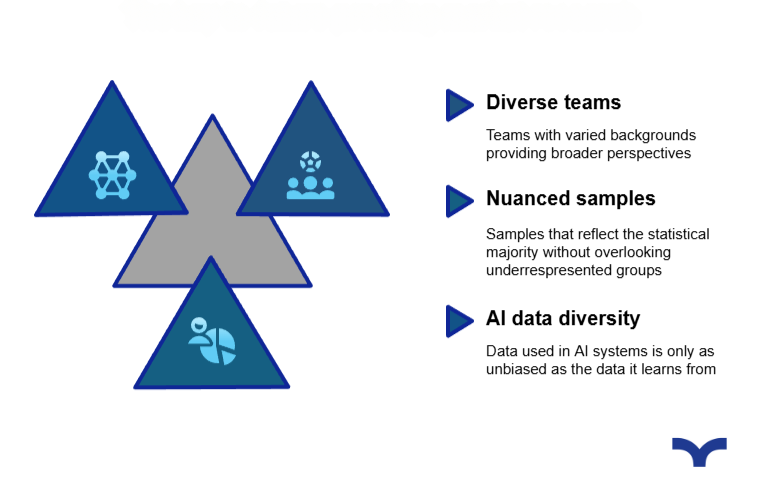AI and big data are revolutionizing market research, enabling faster insights and hyper-targeted campaigns. But the quality of our insights are only as good as the data we collect. Without diverse perspectives, insights risk being biased and incomplete. Prioritizing Diversity, Equity and Inclusion (DEI) ensures that research truly reflects the world we live in. Let’s explore why this matters.
Beyond numbers: Why data without context falls short
AI can analyse vast datasets, predict trends and even tailor survey questions. However, our insights are only as good as the data behind them. If AI models lack diverse input, they reinforce biases, leading to flawed conclusions and ineffective strategies. Without inclusive data, we risk missing key perspectives.
For example, brands can instantly act on consumer conversations through social media listening tools scanning billions of conversations in real time. However, if we rely on AI without paying attention to the diversity of the data going into these systems, brands risk making decisions based on an incomplete picture.
1. Blind spots & eye-openers: Diverse teams win
Teams lacking diversity are prone to blind spots, biases and assumptions. Diverse research teams (including racial, gender, cultural, etc. diversity) varied bring unique experiences and fresh perspectives that can enrich research, ask more inclusive questions and generate comprehensive insights. Consider a global beauty campaign created by a homogenous team: would they account for different skin tones and hair types? Unilever applies this approach by diversifying it’s research teams ensuring relevance across cultures and higher consumer engagement.
Key takeaway: Diversity fuels research & insights that resonate.
2. Mirrors & windows: Rethinking representation
Traditional ‘representative’ samples often reflect the statistical majority overlooking underrepresented groups. This leads to research that fails to capture real-world consumer experiences, widening the gap between research findings and real-world consumer experiences. Procter & Gamble’s “My Black is Beautiful” campaign, for example, succeeded because it intentionally included Black women’s perspectives, leading to products that met real needs and tapped into new markets.
Key takeaway: Representation isn’t just ethical, it’s profitable.
3. AI isn’t neutral: The hidden bias in algorithms
AI models inherit bias from its training data. If that data lacks diversity, AI reinforces, perpetuates and even amplify stereotypes. Generative AI often defaults to gendered assumptions, like depicting doctors as white men and nurses as white women.
Key takeaway: AI is only as unbiased as the data we put into it. Without diverse input, it reinforces existing inequalities rather than challenging them.
How to prevent bias:
- Curate diverse datasets to reflect the full population.
- Build diverse teams to ensure inclusive decision-making.
- Embed diversity in AI algorithms to address, rather than reinforce, systemic inequality.

DEI: The secret to future-proofing your strategy
DEI isn’t a buzzword; it’s a strategic necessity. Companies that embed DEI in their teams, research, and strategy don’t just create more relevant products: they build trust, unlock new markets and future-proof their brands.
In a data-driven world, our tools are only as good as the perspectives behind them. By embedding DEI at every stage of market research, we ensure insights reflect the world as it truly is: diverse, complex and full of opportunity.
Always sharp, never shallow. DEI isn’t an add-on; it’s the lens that ensures research is relevant, resonant and real.

